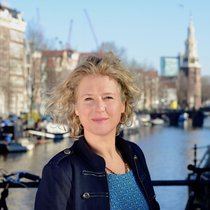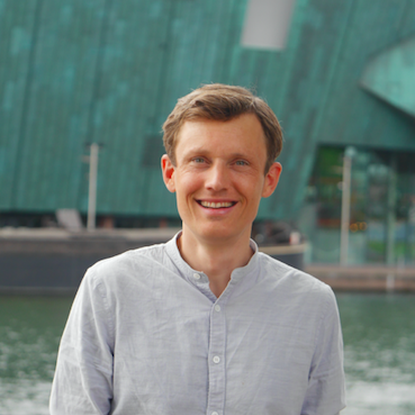Urban Living Labs are real-life, small-scale environments where disruptive urban innovations are tested with users (citizens) before being replicated at large scale. Stakeholders (students, scientists, citizens, companies, and cities) can perform applied research and co-create, develop, and test solutions addressing urgent metropolitan challenges in an iterative way.
At AMS Institute, we are committed to creating successful transitions to a more sustainable resilient and just future. Therefore, we strive to make a positive impact on our cities by creating solutions for complex urban challenges. The urban challenges we face today have a multidisciplinary nature, which makes it important to create a connection between fundamental research and society-wide implementation - and to connect the different disciplines and stakeholders needed to solve them. In light of this, Living Labs are an attractive way to test, create and develop metropolitan solutions that will be adopted more smoothly and swiftly by all stakeholders involved. And as a result, have a long-lasting impact on solving complex multi-stakeholder societal and metropolitan challenges on a large scale.

“I believe we can learn from technology, like we learn from looking at nature. Working in living labs allows us – both the municipality and society as a whole - to learn from one of the greatest technological achievements that people are capable of building: ingenious resilient and sustainable cities. In order to learn from the complex systems that cities are, we need to share knowledge, be optimistic, trust and cooperate - and a living lab environment creates the grounds to do so.”
Sacha Stolp
Director of innovation
The goal within our urban Living Labs is to make impact by developing new products on a small scale – be it an object, a service, a technology, an application, or a system – and to find solutions that can be implemented on a larger scale. This is done in a real-life and co-creating setting in which different stakeholders give shape to the innovation process. The actors are users, private and public actors, as well as knowledge institutes. In the process, the feedback gathered from use and evaluation of the product is used to accelerate further development. As the product is implemented in a real-life setting and validated by the involved actors, it is more likely to be adopted smoothly and swiftly by all involved, and subsequently have a large impact in the city quickly.
Who, where, why, what in UrbanLiving Labs
Method, toolkit & community development
While bringing living labs in practice, we simultaneously continue to develop and fine-tune our Living Lab approach and toolkit. Over the past years, AMS Institute has continuously worked on improving “The AMS Urban Living Lab Way of Working” (ULL WoW). It has evolved into a structured, graphically clear approach to assist in solving complex multi-stakeholder societal and metropolitan challenges. We are in a continuous dialogue with our community of living lab practitioners to keep improving the method and tool kit.
The Living Lab Way of Working guides actors in what to think about in which stage of the process, while offering advice on elementary questions such as for example how to set up a project, how to formalize the agreements made, how to achieve inspiring co-creation sessions and how to manage an innovation collectively through a suitable legal organizational form.
The Living Lab Researchers
TU Delft
- Tamara Metze
- Ellen van Bueren
- Marina Bos-de Vos
- Aksel Ersoy
- Abhigyan Singh
Wageningen University & Research
- Robert Goedegebure
- Pascal Frank
AMS Institute
- Mike de Kreek

